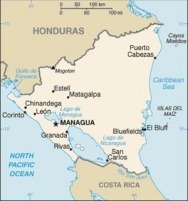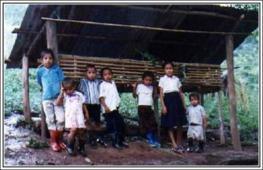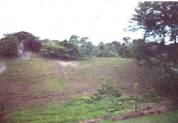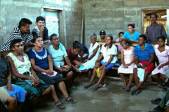
|
|
|
|
|
|



|
|
||
 |
||
|
The World Bank reports that over 40% of its population lives in Absolute Poverty. This extreme poverty is overwhelmingly rural with large concentrations in the Central Mountainous region. The school systems see tens of thousands of children held at home by parents who lack any source of income. Many Nicaraguans have difficulty paying for food, let alone school supplies. Though rich in beauty and natural wonders, Nicaragua is ill prepared to face its problems of famine, under-education, social marginalization, and human underdevelopment. |
The Social Enterpise Fund, Inc.
Address: P.O. Box 1931 - Winter Park, FL 32790-1931
Phone: (904) 280-0094 | Fax: (407) 960-7100 | Email: info@socialenterprisefund.org
Powered & Designed Kingdom Technology Outreach, Inc.
A subsidiary of Daytec Systems, Inc.



 The country has been described as a unique clash of sights, cultures, and geographies with the frustrations of a poor economy, deteriorating environment and unwieldy political situation. As the second poorest country in the western hemisphere Nicaragua's public infrastructure is critically underdeveloped.
The country has been described as a unique clash of sights, cultures, and geographies with the frustrations of a poor economy, deteriorating environment and unwieldy political situation. As the second poorest country in the western hemisphere Nicaragua's public infrastructure is critically underdeveloped.  The population is just over 5 million. A serious shortage of medical coverage exists. The less than thirty public hospitals serving the entire country is an interesting testimony to the quality of life that the most vulnerable components of the residents endure. There are less than 3.7 doctors for every 10,000 Nicaraguans.
The population is just over 5 million. A serious shortage of medical coverage exists. The less than thirty public hospitals serving the entire country is an interesting testimony to the quality of life that the most vulnerable components of the residents endure. There are less than 3.7 doctors for every 10,000 Nicaraguans. The
The  According to the World Food Program, Nicaragua is considered to be one of the 14 countries in the world with an seriously precarious food supply situation. Some 45% of children in Nicaragua suffer from one kind of nutritional deficiency or another with the poor in the mountainous regions hit the hardest.
According to the World Food Program, Nicaragua is considered to be one of the 14 countries in the world with an seriously precarious food supply situation. Some 45% of children in Nicaragua suffer from one kind of nutritional deficiency or another with the poor in the mountainous regions hit the hardest.